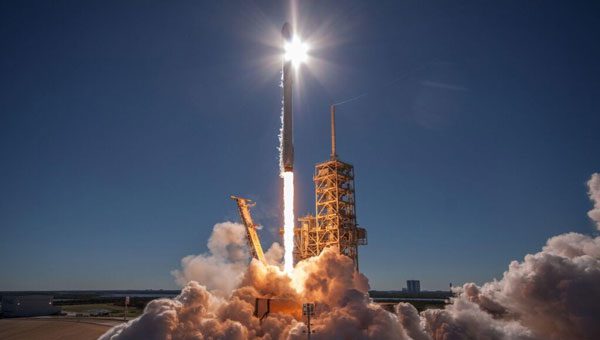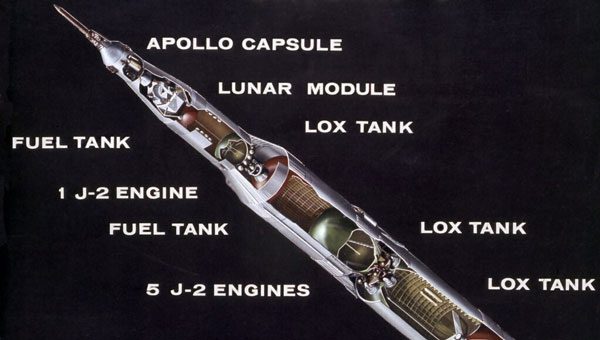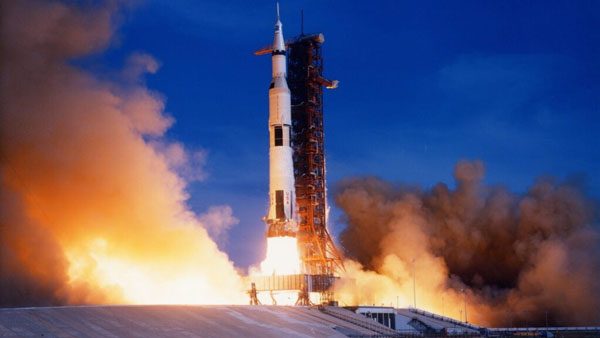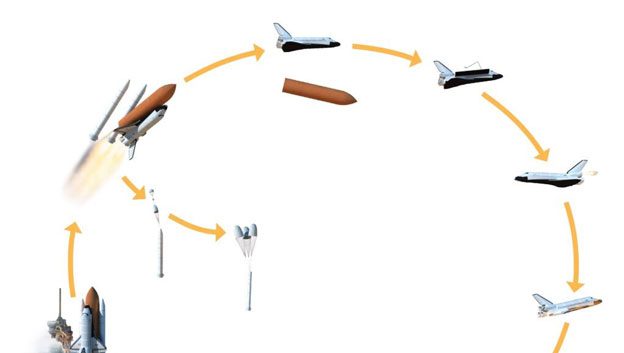If you often follow space missions, you will surely notice that many rockets are multi-stage, and they separate each stage during flight. But why is that? Why not just build a single-stage rocket for simplicity? If you’re curious about this issue, let’s explore it together.
Launching cargo into orbit consumes a tremendous amount of fuel, and rockets cannot afford to carry unnecessary weight
To launch a satellite into space and maintain its orbit around Earth without falling back, the rocket must propel it to a speed of 7.9 km/s. This is an incredible speed, and achieving it requires an enormous amount of fuel.

To give you a clearer picture, let’s take the two-stage Falcon 9 rocket from SpaceX as an example. Developed by SpaceX along with the SpaceX Dragon spacecraft, it has repeatedly transported cargo to the International Space Station (ISS). This rocket is one of the most efficient space vehicles ever created. When fully loaded, it weighs 540,000 kg, with more than 510,000 kg being fuel (including liquid hydrogen and oxygen), which accounts for about 94.5% of the rocket’s total weight. The remaining components, such as the engines, fuel tanks, and rocket shell, make up only about 5.5%. A massive rocket like this, with over half a million kg of fuel, can only deliver a payload of 22,800 kg into low Earth orbit.

Diagram of the Saturn V rocket, illustrating how ’empty’ it is without fuel
The heavier the rocket, the more fuel it consumes, and it certainly shouldn’t carry any unnecessary weight that would waste fuel. Therefore, any non-essential weight should be eliminated to keep the rocket’s mass minimal and fuel maximized.
Multi-stage rockets are the most efficient way to transport cargo into orbit
To eliminate excess weight, rocket engineers devised multi-stage rockets to carry more cargo into orbit with less fuel. This design approach is still widely used today.
Dividing the rocket into multiple stages allows it to shed unnecessary weight, enabling it to fly faster and farther. In a single-stage rocket, the non-fuel mass (engines, shell, fuel tanks, etc.) remains constant throughout the flight. In contrast, a multi-stage rocket discards each stage as it uses up its fuel, allowing the next stage to ignite and continue flying without carrying the empty stage. Each stage of the rocket is specifically designed for maximum efficiency.

Regarding how the stages are designed differently, we can use NASA’s Saturn V rocket as an example. This is the largest rocket in history, with a total weight of over 3,000 tons. NASA used it in the Apollo and Skylab programs, capable of carrying a payload of 140 tons, the largest in history. This rocket has three stages, each with different amounts of fuel and engine systems.
Stages of the Saturn V rocket
Stage 1:
- Mission: To help the rocket launch and accelerate to a speed of 6,000 mph (9,650 km/h)
- Engines: 5 F-1 rocket engines
- Thrust: 3,400 tons
- Fuel: 1,204,000 liters of liquid oxygen and 770,000 liters of kerosene
- Operation time: 150 seconds
Stage 2:
- Mission: To help the rocket reach a speed of 25,000 mph (40,230 km/h) – sufficient to escape Earth’s gravitational pull. For missions in low Earth orbit, such as the Skylab program, this stage is sufficient.
- Engines: 5 J-2 rocket engines
- Thrust: 500 tons
- Fuel: 984,000 liters of liquid hydrogen and 303,000 liters of liquid oxygen
- Operation time: 360 seconds
Stage 3:
- Mission: To assist the spacecraft in carrying out space missions, such as sending a spacecraft to the moon.
- Engine: 1 J-2 rocket engine
- Thrust: 100 tons
- Fuel: 252,750 liters of liquid hydrogen and 73,280 liters of liquid oxygen
- Operation time: 165 + 335 seconds (2 burns)
Of course, there are many modern single-stage rockets that can indeed carry cargo into orbit, but the issue lies in the amount of cargo they can carry, which is significantly less than that of multi-stage rockets. This is because, in addition to the cargo, they also have to carry unnecessary weight.
This article explains why space rockets are often multi-stage and separate into stages during flight. We hope it has provided you with interesting information. Thank you for your interest, and we hope you continue to follow GVN 360.
*Additional information:

The space shuttle, while not a launch vehicle, operates in a similar way. At launch, it carries 2 solid rocket boosters and an external fuel tank. Once it reaches an appropriate altitude, it will discard the 2 boosters, and later, it will separate from the external fuel tank to transport cargo into space. After completing its mission, it will return to Earth and land.





















































